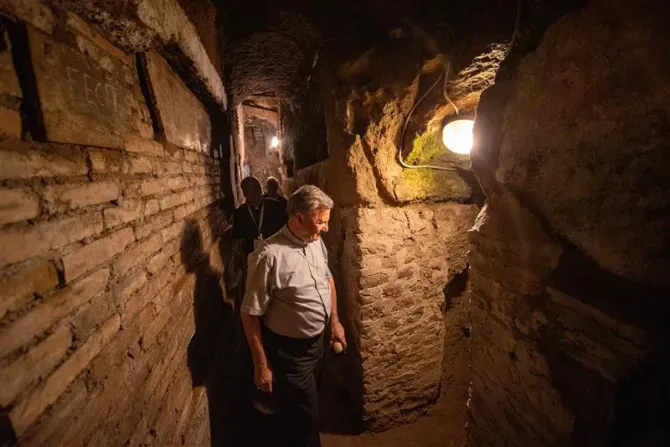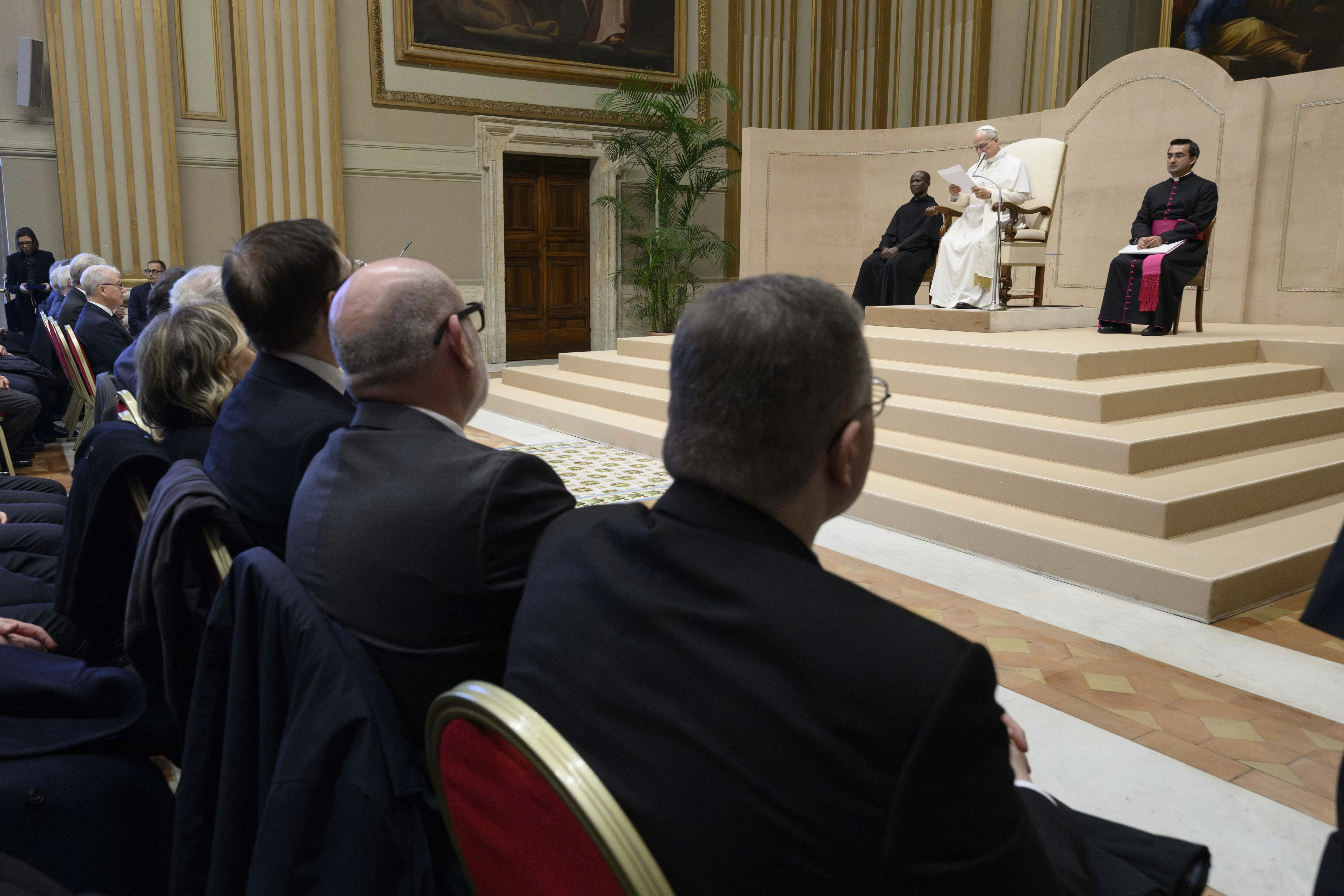Aboard the papal plane, 13 October, 2023 / 12:57 pm (ACI Africa).
Synod on Synodality delegates made a pilgrimage to Rome’s catacombs Thursday where they literally “walked together” to the tombs of early Christian martyrs.
Hundreds of delegates took a break from their discussions of synodality to visit the catacombs of St. Sebastian and St. Callistus located on Rome’s ancient Appian Way on Oct. 12.
Each synod delegate was given a copy of the “Pact of the Catacombs,” translated into four languages when they arrived at the Basilica of Saint Sebastian Outside of the Walls for the opening prayer of the pilgrimage. The pact, signed by 42 bishops in 1965 during the Second Vatican Council, was not referred to by any of the speakers during the synod pilgrimage, but provided as “meditation material,” Vatican spokesman Matteo Bruni told CNA.
Synod on Synodality delegates are literally “walking together” today on a pilgrimage along Rome’s ancient Appian Way to the catacombs of Saint Sebastian. pic.twitter.com/HnKhNW0bLx
— Courtney Mares (@catholicourtney) October 12, 2023
Before the synod delegates descended into the dark tunnels of the catacombs, Cardinal Jean-Claude Hollerich, the relator general of the Synod on Synodality, led them in spiritual reflection and invited them to recite the Apostles’ Creed together inside the basilica.











